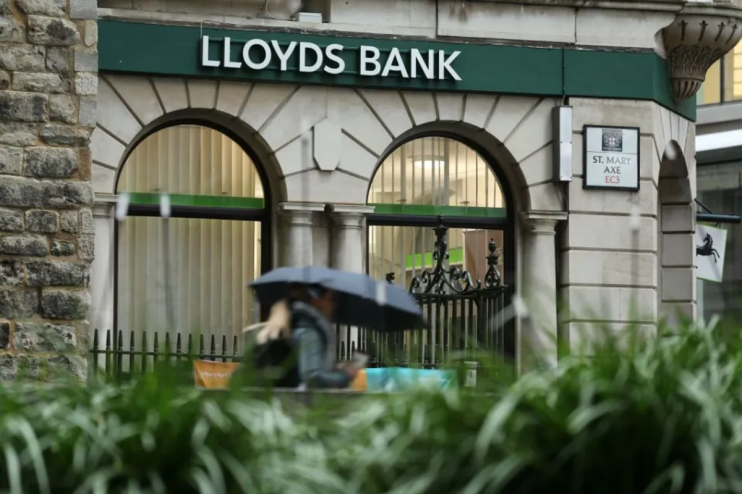Lloyds profit drops against bumper 2023 as margins shrink

Lloyds Banking Group has posted a 28 per cent fall in profit – in line with analysts’ estimates – as price wars and the prospect of interest rate cuts forced it to offer better rates to customers.
The group – which owns Lloyds Bank, Halifax, Bank of Scotland and Scottish Widows – reported a pretax profit of £1.63bn for the first three months of 2024.
This figure is down from £1.78bn during the previous quarter and 28 per cent lower than the £2.26bn in the first quarter of 2023. A company-complied analyst consensus had expected a profit of £1.66bn.
Lloyds’ profits were propelled to a record high last year following interest rate hikes from the Bank of England. However, its margins have narrowed into 2024 amid intense competition for mortgages and deposits, and the expectation that rate-setters will make multiple cuts this year.
The lender’s net interest income – the gap between what it earns from interest on loans and pays out to savers – fell to £3.05bn in the first quarter from £3.43bn at the end of last year.
Meanwhile, its net interest margin (NIM) fell to 2.95 per cent in the first quarter, from 3.22 per cent in the same period last year. Analysts had expected a margin of 2.93 per cent.
In recent weeks, concern over the US economy and stickier-than-expected UK inflation has caused traders to pare their bets on rate cuts from the Bank of England. Markets are currently pricing in just two cuts in 2024, down from seven at the start of the year.
As a result, lenders could see another boost from higher-for-longer rates this year. Lloyds has reaffirmed its guidance of a NIM of greater than 2.9 per cent for 2024. It continues to expect three base rate cuts from the central bank this year, with finance chief William Chalmers telling reporters that the lender expected the first cut “sometime around the middle of the year”.
As Britain’s largest domestically-focused bank, Lloyds is considered a bellwether for the UK economy. The group set aside £56m for bad loans, down from £242m in the previous quarter and £541m this time last year, suggesting resilience among its customer base despite the tough economic backdrop.
Loans and advances to customers fell during the quarter to £448.5bn from £452.3bn in the previous three months, with a £1.6bn reduction in Lloyds’ UK mortgages portfolio. Lending to small and medium-sized firms also fell by £0.8bn.
On the other side of its balance sheet, deposits fell £2.2bn during the quarter to £469.2bn. The decline was driven by a £3.5bn fall in commercial banking deposits, partly offset by retail deposits rising by £1.3bn.
“The group is continuing to deliver in line with expectations,” said chief executive Charlie Nunn. “This underpins our ambition of higher, more sustainable returns.”
Lloyds announced in February that it took a £450m provision to cover potential costs tied to a review by the Financial Conduct Authority (FCA) into now-banned commission arrangements on car loans that analysts say could cost the motor finance industry up to £16bn in compensation payouts.
The bank said on Wednesday that it had made no further changes relating to the potential impact of the probe, noting that the FCA is due to set out its next steps in September.
Lloyds, which owns the UK’s largest auto lender Black Horse, is considered the most exposed UK bank in absolute terms. Analysts at RBC estimate it could take a hit of around £2.5bn, or up to £3.5bn in its worst-case scenario, from potential compensation fees.
Earlier this month, the FCA wrote to motor finance firms to remind them to “maintain adequate financial resources at all times”.
“From our perspective, we feel that we comply with all the applicable regulations,” Chalmers said. “We do look forward to an impartial review that will give us some clarity in terms of the step forward in this area and in a way that, I think the FCA wants to achieve, results in an orderly outcome for what is a vital industry.”
Lloyds saw operating costs of £2.4bn last quarter, up 11 per cent year-on-year. It said the increase was mainly driven by a new sector-wide levy from the Bank of England and a £100m rise in severance charges taken early in the year.
The bank’s shares fell as much as 3.2 per cent in early trading on Wednesday before swinging to a 2.8 per cent gain by midday.
Benjamin Toms, an analyst at RBC Capital Markets, said: “In our view Lloyds’ stronger deposit franchise should help the bank keep NIM relatively stable when compared with peers. Additionally, Lloyds has invested heavily in its other income line which should allow the bank to keep top-line momentum once the benefit from higher rates fades.”
Updates throughout